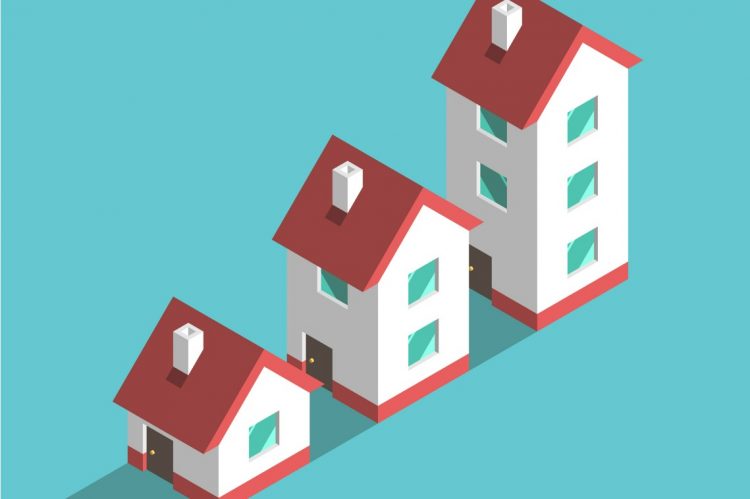The number of U.S. households will grow over the next 10 years, but at a much slower pace than over the last 30 years.
According to a new report from the Joint Center for Housing Studies (JCHS) of Harvard University, household growth is projected to increase by 8.6 million (or about 860,000 annually) between 2025 and 2035. In the decade following, household growth is expected to slow even more, with only 5.1 million households added, totalling 147.9 million households in 2045—the smallest increase in the last century.
This is in stark contrast to growth between the 1990s (13.5 million) and the 2010s (10.1 million).
Why the slowdown?
The stagnation is, in part, due to demographic trends. Birth rates are expected to decline as mortality rates increase. The baby boomer generation is entering the oldest age groups with the highest mortality rates, projected to total 65.6 million people in 2025 between the ages of 61 and 79.
Additionally, JCHS predicts that native population growth (the net sum of births minus deaths) will likely plateau. As a result, immigration levels will play an increasingly important role in population growth.
Even with higher levels of immigration, said report author Daniel McCue, the aging population will be a significant factor in lower household growth numbers. For example, should immigration levels remain steady at the recent average of 873,000 per year, household growth would likely reach 8.6 million in 2025 – 2035. Should it drop to 422,000 annually, however, that number sinks to 6.9 million.
Even reserved scenarios point toward a downward trend due to projected declines in natural population growth per Census Bureau data.
How housing will transform
Housing characteristics, and therefore preferences, will largely change in the coming decades, particularly as a result of increased diversity in the racial and ethnic makeup of households. JCHS predicts that household growth will primarily be driven by households headed by Black, Hispanic and Asian people. People of color will account for nearly all net household growth, while the number of non-Hispanic white householders will likely decline.
Aging baby boomers will lead to a 60% rise in households led by individuals aged 80 and older by 2035—this will be doubled by 2045. Within this segment, there will be greater demand for accessibility accommodations. Also, then-middle-aged millennials will be forming households with increased demand for family-friendly housing. As boomer parents move in with their children, the number of households with a parent of the householder present will increase from 4.8 million households in 2025 to 6.3 million in 2035—an increase of 30% from 2025. This is expected to increase to 7.5 million by 2045—up 56% from 2025.
Impact on housing demand
As household growth is the primary driver of new housing demand, the curb in growth will have a significant impact. Between 2025 and 2035, the U.S. will need 11.3 million new homes, but this number drops to just 8 million from 2035 to 2045—down from the 9.9 million units built in the 2010s and the 17 million units built in 2000 through 2009.
As a result, construction spending could instead shift to existing homes toward home improvement costs and redevelopment as older homeowners vacate their homes and prepare them for turnover.











